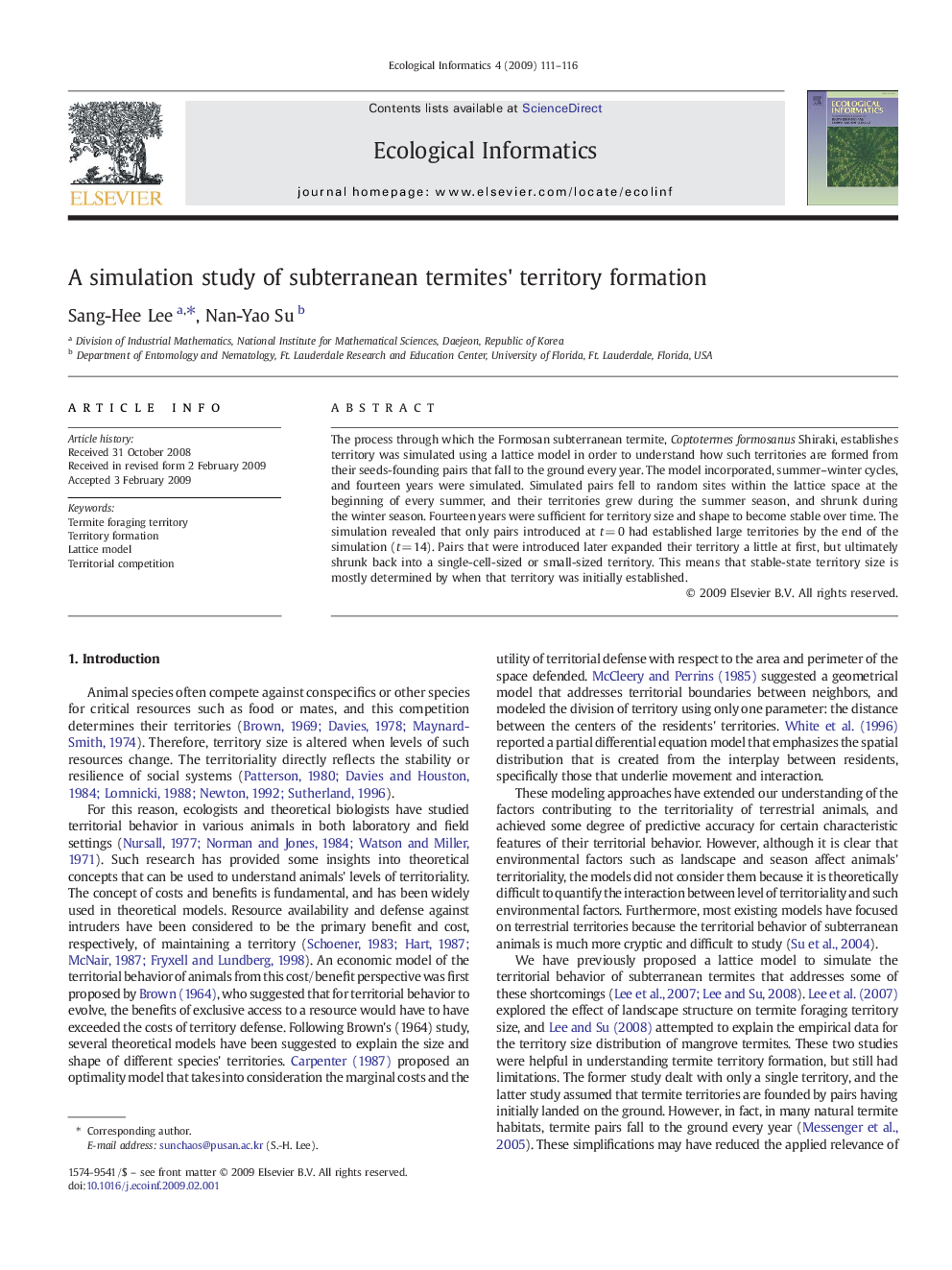| Article ID | Journal | Published Year | Pages | File Type |
|---|---|---|---|---|
| 4375220 | Ecological Informatics | 2009 | 6 Pages |
The process through which the Formosan subterranean termite, Coptotermes formosanus Shiraki, establishes territory was simulated using a lattice model in order to understand how such territories are formed from their seeds-founding pairs that fall to the ground every year. The model incorporated, summer–winter cycles, and fourteen years were simulated. Simulated pairs fell to random sites within the lattice space at the beginning of every summer, and their territories grew during the summer season, and shrunk during the winter season. Fourteen years were sufficient for territory size and shape to become stable over time. The simulation revealed that only pairs introduced at t = 0 had established large territories by the end of the simulation (t = 14). Pairs that were introduced later expanded their territory a little at first, but ultimately shrunk back into a single-cell-sized or small-sized territory. This means that stable-state territory size is mostly determined by when that territory was initially established.
